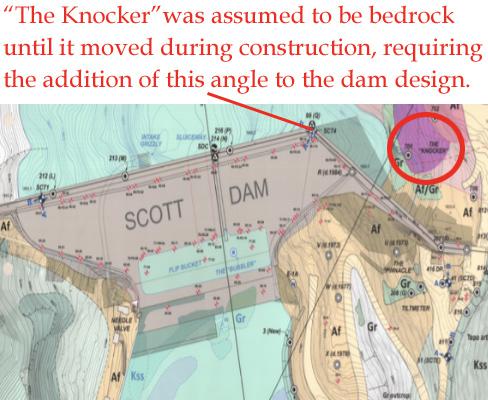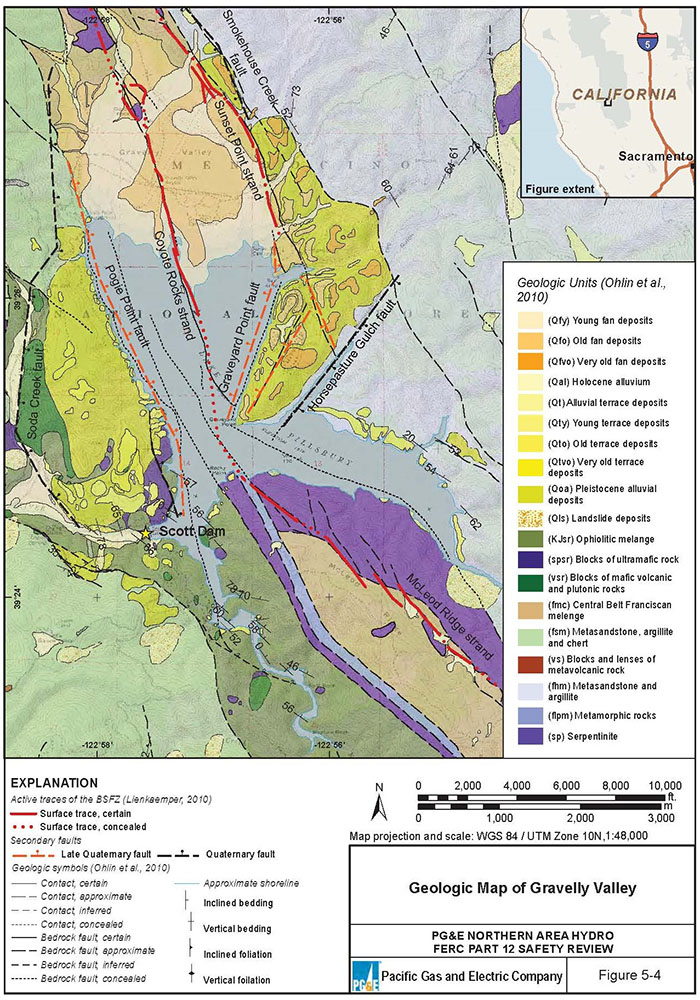| Federal Energy Regulatory Commission (Eel River Dams, called the Potter Valley Project is docket #P-77) |
PG&E’s Potter Valley Project |
|
Congressman Huffman’s Ad Hoc Committee. Friends of the Eel River has been a participant in Congressman Huffman’s collaborative Ad Hoc process, helping develop locally supported recommendations for the Federal Energy Regulatory Commission. |
|
Reasons to Remove the Eel River Dams
- Fish passage & above dam habitat
- Click here to see Emily Cooper's presentation on Estimating Salmonid Habitat Capacity in the Upper Eel Watershed, from the 2017 Salmonid Restoration Federation Conference. Emily's research indicates that allowing fish passage at Scott Dam would open roughly 79 miles of Chinook habitat, 288 miles of Steelhead rearing habitat, and 181 miles of Steelhead spawning habitat.
- Flows throughout mainstem
- Click here to read Dr. O'Dowd and Dr. Trush's 2016 Blockwater Investigation, in which they compare current impaired flows with modeled unimpaired flows. Analysis showed that current flows reached critical life history thresholds earlier in the season compared to the modeled unimpaired flows.
- Invasive species Sacramento pikeminnow predates on salmon and proliferates in the warm water conditions created by the dam
- Diminished fish runs
- Click here to read a Historical Review of Eel River Anadromous Salmonids by Professors Ron Yoshiyama and Peter Moyle. "Records suggest that historic runs of Chinook salmon probably ranged between 100,000 and 800,000 fish per year, declining to roughly 50,000-100,000 fish per year in the first half of the 20th century."
Miller Pacific engineers concluded “it is our professional opinion that the large landslide complex adjacent to, and possibly below, the left abutment presents a significant geological hazard to the dam that requires further investigation. Since the dam acts as a strut across the Eel River, the landslide mass may be applying a significant soil pressure to the dam. In addition, the preliminary calculated seismic displacements are enough to cause concern about uplift or damage to the dam from landslide movement during a strong seismic event.”
The original plan called for Scott Dam to be constructed in a straight line across the Eel River canyon, and to attach to a substantial rock outcropping on the south side of the canyon, originally believed to be bedrock. During construction, however, this feature, now called ‘the Knocker,’ began to move, revealing that it is in fact a very large boulder, and not bedrock at all (see these photos from 1920 that show 'the knocker' before and after it slid down). The design of the dam was changed to run in front of ‘the Knocker,’ as it does today. In the photo below, the 'the Knocker' is the purple blob directly behind the dam.
 Many dams are built on or nearly on fault lines because that's where a river channel is naturally most narrow. Scott dam is no exception. The image below is a geologic map of Gravelly Valley, where Scott Dam is located. Click here to read PG&E's entire report on geology and seismicity.
Many dams are built on or nearly on fault lines because that's where a river channel is naturally most narrow. Scott dam is no exception. The image below is a geologic map of Gravelly Valley, where Scott Dam is located. Click here to read PG&E's entire report on geology and seismicity.

Click here to read the Center for Environmental Economic Development's 2004 study, Economic Benefits to Mendocino and Lake Counties from Removing the Dams on the Eel River. Study authors Dr. Ihara and Marshall conclude that "nature-based tourism benefits to Mendocino and Lake Counties, counting both rafting and increased fishing, are estimated to exceed $2,000,000 annually".
Click here to see Dr. Rosenblum's presentation that includes analysis of hydropower generation at the Eel River Dams (Potter Valley Project) and Coyote Dam in Mendocino, as well as analysis of replacing that energy with solar power. A five acre solar array would more than replace the energy generated by the Eel River Dams.
Potter Valley Project Studies
This paper by Alyssa FitzGerald, et al from National Marine Fisheries Service confirms previous research and traditional ecological knowledge that the upper basin habitat behind Scott dam is some of the best in the entire watershed. The habitat is notable for its cold water availability, even in the summer months of a dry year, and the physical characteristics that make it especially productive spawning and rearing habitat.
This paper by Samantha Kannry, et al from UC Davis presents evidence that alleles for both anadromy and pre-mature migration (summer-run timing) are present in rainbow trout trapped in the upper basin behind Scott dam. It also documents the populations of Northern California summer steelhead elsewhere in the Eel watershed, in the north and middle forks, as well as the Van Duzen river.
- Scott Dam and Cape Horn Dam Removal Prepared by McMillen Jacobs Associates, November 2021
- Cape Horn Dam Fish Passage Improvements Prepared by McMillen Jacobs Associates, November 2021
- Potter Valley Irrigation District Water Supply Alternatives Prepared by McMillen Jacobs Associates, November 2021
- Sediment Supply to the Upper Eel River Prepared by Stillwater Sciences, November 2021
- Analyses and Preliminary Modeling of Sediment Transport Following the Proposed Scott Dam Removal, Eel River, California Prepared by Stillwater Sciences, November 2021
- Hydraulic Model Development and Potential Flood Implications Following Proposed Scott Dam Removal, Eel River, California Prepared by Stillwater Sciences, August 2021
- Fisheries Restoration Framework for the Eel River Watershed and Phase 1 Scope of Work Prepared by Stillwater Sciences, November 2021
- Fish Passage Profiles Evaluation Report Prepared by the Fish Passage Working Group, December 2019
- Water Supply Modeling for Potter Valley Project and Russian River Alternatives Prepared by the Water Supply Modeling Subgroup, May 2019 (updated February 2020)
This research by Emily Cooper from Humboldt State University presents estimates for potential habitat for both Chinook Salmon and steelhead trout.
"Using three fish passage scenarios, potential Chinook Salmon habitat was estimated between 89-127 km (55-79 mi) for spawning and rearing; potential steelhead trout habitat was estimated between 318-463 km (198-288 mi) for spawning and between 179-291 km (111-181 mi) for rearing."
Click here for additional documents and information from the Ad Hoc Committee
Pre-Application Document and Notice of Intent to file for new application
Submitted to FERC June 28, 2019
Feasibility Study Report
Submitted to FERC May 13, 2020
Mercury and Reservoirs Factsheet
September 2013
